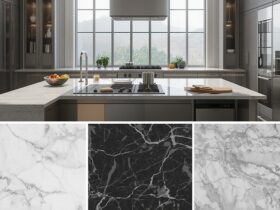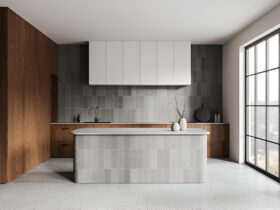By Lillie Walter, Updated February 19, 2025
In an era where technology reshapes how we interact with our living spaces, RoomsGPT emerges as a groundbreaking AI-powered interior design tool. This platform democratizes creativity, allowing users to reimagine any room in seconds—no design expertise required. Whether you’re a homeowner, renter, or real estate professional, RoomsGPT offers a seamless blend of innovation and accessibility. Below, we explore its features, benefits, limitations, and the broader trends shaping its impact on the future of home design.
1. Introduction: The Rise of AI in Interior Design
The interior design industry has undergone a seismic shift with the advent of AI tools like RoomsGPT. As remote work and urbanization drive demand for personalized living spaces, platforms that offer instant, cost-effective solutions are gaining traction. RoomsGPT leverages advanced algorithms to analyze room layouts, lighting, and dimensions, generating photorealistic redesigns in styles ranging from modern minimalist to coastal chic.
Why This Matters:
- Remote Work Trends: With professionals migrating to suburban and tier-II cities for affordability and space, tools like RoomsGPT help visualize renovations in underdeveloped markets.
- Sustainability: Users can experiment with eco-friendly designs before committing to physical changes, reducing material waste.
- Real Estate Innovation: Virtual staging via AI helps agents showcase properties to a tech-savvy generation.
2. How RoomsGPT Works: A Step-by-Step Guide
RoomsGPT simplifies room transformations into three intuitive steps:
- Upload a Photo: Capture a clear, well-lit image of your room. Avoid clutter for optimal results.
- Choose a Style: Select from nine themes (Industrial, Tropical, Vintage, etc.) or combine multiple styles for hybrid designs.
- Generate & Refine: Receive AI-generated renders in seconds. While customization options are limited, users can tweak themes or re-upload photos for better accuracy.
Pro Tip: For complex layouts, use high-resolution images to minimize AI errors like misplaced furniture or omitted appliances.
3. Key Features of RoomsGPT
a) Speed and Accessibility
- Instant Rendering: Transform rooms in under 10 seconds, ideal for quick inspiration.
- Mobile Compatibility: Redesign spaces on-the-go via smartphones.
- Free Tier: Three daily credits allow users to test styles risk-free.
b) Style Diversity
From Professional (ergonomic home offices) to Coastal (light wood tones and nautical accents), RoomsGPT caters to diverse aesthetics. Its library mirrors global trends, including India’s growing preference for sustainable and luxury homes.
c) Real Estate Applications
- Virtual Staging: Vacant rooms are furnished digitally to attract buyers, saving thousands on physical staging.
- Rental Market: Co-living spaces in cities like Bengaluru and Hyderabad can be marketed with AI-enhanced visuals.
4. Pros and Cons: Is RoomsGPT Right for You?
Pros:
- Cost Savings: Eliminates designer fees (average consultation: 500–1,500).
- Global Reach: Supports users in tier-II/III cities lacking local design resources.
- Eco-Friendly Planning: Reduces renovation waste by previewing changes digitally.
Cons:
- Photo Dependency: Low-quality images yield unrealistic designs.
- Limited Customization: Unlike premium tools like HomeVisualizerAI, RoomsGPT doesn’t allow material swaps or structural edits39.
- Privacy Concerns: Uploading personal photos raises data security questions7.
5. RoomsGPT vs. Competitors
| Tool | Best For | Pricing | Unique Features |
|---|---|---|---|
| RoomsGPT | Casual users, quick ideas | Free (3 credits/day) | Mobile-friendly, diverse themes |
| HomeVisualizerAI | Professional designers | Subscription-based | Sketch-to-render, material customization |
| MyEdit | Creative experimentation | 30 free credits | Advanced user controls |
Verdict: RoomsGPT excels in simplicity, while HomeVisualizerAI suits professionals needing precision39.
6. Case Studies: Real-World Success Stories
- Suburban Home Makeover: A family in Pune, India, used RoomsGPT to convert a dated living room into a Modern Tropical oasis, aligning with the city’s affordability boom.
- Co-Living Space in Bengaluru: A startup redesigned a cramped apartment into a vibrant co-living hub, attracting millennial renters.
- Eco-Friendly Office: A remote worker in Hyderabad integrated solar panel layouts and bamboo furniture using RoomsGPT’s Sustainable theme.
7. The Future of AI in Interior Design
It is part of a larger movement toward tech-driven real estate:
- Integration with PropTech: Expect AI tools to sync with CRM and ERP systems for seamless project management.
- Hyper-Personalization: Future updates may include AR overlays and voice-command adjustments.
- Sustainability Focus: As green buildings dominate India’s market, AI will prioritize energy-efficient designs.
8. Conclusion: Embrace the Design Revolution
RoomsGPT isn’t just a tool—it’s a gateway to reimagining spaces with confidence. While limitations exist, its speed, affordability, and versatility make it indispensable for homeowners, agents, and DIY enthusiasts. As the Indian real estate market expands into tier-II cities and luxury segments, AI-driven design will play a pivotal role in shaping tomorrow’s homes.
Ready to Transform Your Space?
Visit RoomsGPT today and unlock three free designs. For deeper customization, pair it with HomeVisualizerAI for professional-grade results.











Find Us on Socials